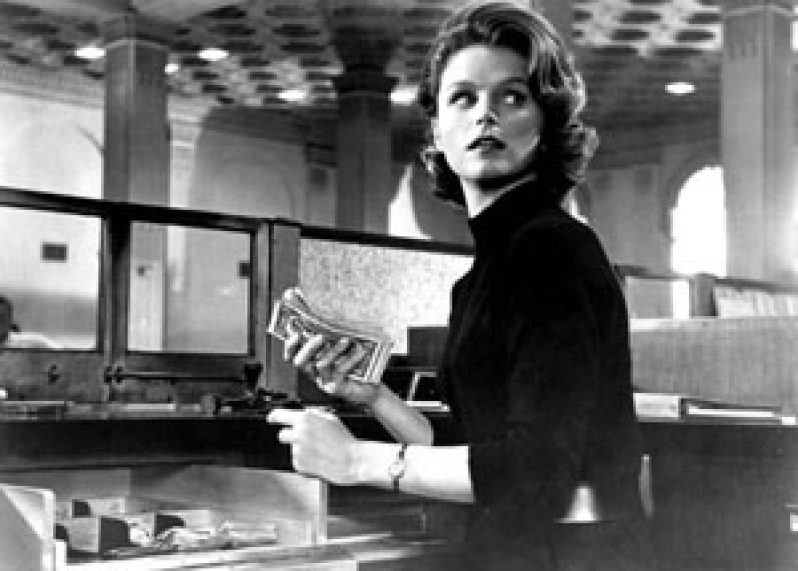LEE Remick projected a serious yet tender all-round sensuality that looked equally at home in the areas of rural America, with its rustic Black and White folk, as we also see in ‘SANTUARY’ of 1961, William Faulkner’s intricately written novel involving the young Southern woman, Temple Drake, of simmering passions, played memorably by Remick under Tony Richardson’s direction.
These rural settings were only half her style; the other half involved an urban modernity, with female ambivalence and vulnerability, as in ‘DAYS OF WINE AND ROSES’ of 1963, under direction of Blake Edwards, one of Hollywood’s most stylish directors of contemporary life.
Remick’s wonderful seductive spirit is present even in the swaying current of the film’s opening graphics, suggesting the liquid aura of sex and liquor while its haunting theme song plays.
‘Days of Wine and Roses’ As the stylish San Francisco secretary whose voice we hear over the phone before seeing her arrival by launch to a yacht party, her concentrated mannerisms, like nibbling chocolate while silently ignoring Jack Lemmon, made her performance in the first fifteen minutes of this film a creative lesson in visual screen language unmatched to date. But apart from Remick’s personal visual characteristics brought to now famous roles, as in ‘WILD RIVER’ and ‘Days Of Wine And Roses’, there is the actual inner implications of these roles, which reveal her command of a social lesson revealed either by positive progressions or negative reflection.
As the stylish San Francisco secretary whose voice we hear over the phone before seeing her arrival by launch to a yacht party, her concentrated mannerisms, like nibbling chocolate while silently ignoring Jack Lemmon, made her performance in the first fifteen minutes of this film a creative lesson in visual screen language unmatched to date. But apart from Remick’s personal visual characteristics brought to now famous roles, as in ‘WILD RIVER’ and ‘Days Of Wine And Roses’, there is the actual inner implications of these roles, which reveal her command of a social lesson revealed either by positive progressions or negative reflection.
In ‘Days Of Wine And Roses’, Remick’s social lesson is imparted by negative reflection, where, as the quiet stylish bookworm secretary, her trusting rustic innocence is gradually spoiled by her involvement with, and eventual marriage to, an urban executive (Jack Lemmon), whose neurotic lifestyle introduces her to drinking as an antidote to urban stress, until they both become alcoholics in a frustrating big-city family life.
Lessons of ‘Wild River’
In ‘Wild River’ , on the other hand, a film with three lead characters (Jo Van Fleet at her best as Remick’s stubborn old grandmother who refuses to vacate her familiar wooden house on a wild river’s island; and Montgomery Clift as the 1930s Roosevelt Government official charged with moving the river bank and island dwellers to higher terrain), Remick’s real disaffection is not with the rustic landscape, but the social and racial attitudes of her people on that landscape; her daily witnessing of entrenched bigotries and inequalities between Black and White, which her first scenes suggestively account for her tight-lipped reaction to the arrival of Clift, the educated Northern outsider.
Her gradual decision that Clift is the man she loves and wants is based on her experience that other White male suitors of her area are all born with its social and racial biases, whereas Clift, by the proof of his kind, gentle, pacifist yet mentally strong temperament, and his practical stand against racism, is a partner whose values she shares.
Remick’s positive progression in ‘Wild River’ is proven in the film’s visually suggestive last scenes, where, with Clift and her two children airborne, they metaphorically ‘rise above’ the historical conflicts and racial residue of the flooded landscape below, and leave it behind.
Unique features
Remick’s features, and what she could do with it, account for much of her stylish acting. Her films, like ‘Sanctuary’, ‘Wild River’, ‘Days of wine and Roses’, ‘EXPERIMENT IN TERROR’, ‘THE RUNNING MAN’ etc, indelibly installed her face in close-ups so that her mouth, her hairstyle, and, above all, those deeply piercing eyes of cosmic blue, are now part of the history of cinema.
There is also a stunning brilliance to most of Remick’s films, especially those directed by Martin Ritt, Elia Kazan, Blake Edwards, Robert Mulligan, and Carol Reed. It is as if Remick had paid attention to the visual quality of these directors she became professionally involved with, and with whose visual work her own unique visual and communicative style would achieve perfect integration, making her an actress of the highest order, and an actress blessed at her early death of natural causes at age fifty-five in 1991.




.jpg)










